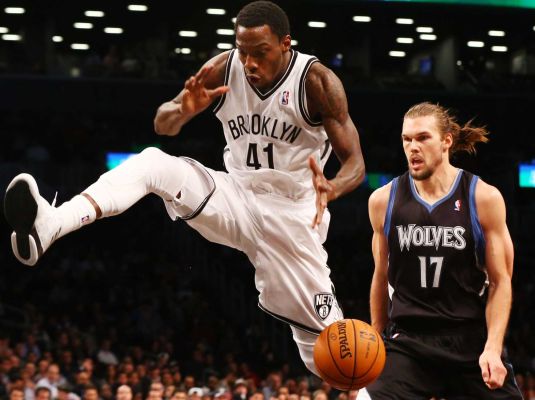Tyshawn Taylor, past and present
The thing about Tyshawn Taylor is that he’s human. He’s young, maybe-a-tad-undersized at the tail end of his rookie NBA campaign, maybe a full playoffs and offseason away from meaningful playing time at the NBA level. His first year in the NBA hasn’t been anything particularly special—at times, he’s risen to the occasion and stepped up for banged-up iterations of this year’s Nets, but at other times, he’s on the bus to Springfield with fellow NBDL yo-yoer Toko Shengalia. He’s got a young family that I’m sure he wishes to see more of and a successful college career in a hoops-obsessed part of the country in his hindsight, and fading. He likes to get on Twitter and vent—he’s recommended follow if you like accounts that tweet Drake or Jay-Z in between mini meltdowns (the latter isn’t exactly a new thing). No matter if it’s good stuff or bad stuff, the past can be hard to shake when the road in front of you is long.
So, as someone who’s tracked Tyshawn’s career from roughly the time he’d signed to Kansas—he was arguably the best player on a Bobby Hurley Sr. St. Anthony’s team that was so good someone made a documentary about them—it’s tough to gather what makes up the Tyshawn Taylor experience, present day. Speaking as a Jayhawk, Tyshawn Taylor came to represent occasional, dizzying brilliance offset—usually immediately—by indescribable boneheadedness.
This was best exemplified by the sequence where Taylor stole the ball from Ohio State’s William Buford, up two in the closing seconds of a Final Four game that decided who played the MonStars Kentucky, and threw an errant bounce pass to Elijah Johnson instead of dribbling the clock out. The fan-adopted notion of “Good Tyshawn” and “Bad Tyshawn” perhaps best summarizes the downright zig-zagginess of the experience. He was a player never felt like you could trust, but on an overachieving Kansas team that was only about four deep, you didn’t have much of a choice. A dangerous bond had formed.
When he got drafted by the Brooklyn Nets, a team that had recently installed the space-temple-like Barclay’s Center down the street from my house, I was obviously ecstatic. But as I’ve cheered Tyshawn on from the fringe, I’ve also noticed just how much it takes to crack a rotation in the modern NBA, which I’d argue is deeper than it’s ever been. Leaning on the old adage of “To succeed in the NBA, you need to be good at everything and great at one thing”, it’s not clear what Tyshawn’s great thing may be; an elite defender in college, he’s targeted by bigger, longer PGs anytime he’s gotten a crack at the rotation. More of a scorer—this is backed up by his mostly dominant, confident performances in Springfield this season—he’s learning what it might take to run an NBA team where he’s never going to be the focus offensively.
He’s still the Tyshawn I’ve know for years, capable of a thrilling drive to the bucket that’s bookended by a turnover. It can be as exciting to watch as it ever was, especially since Tyshawn’s speed is even more noticeable on a concrete-shoed Nets team. But now, it seems like there’s more at stake on a personal level.
Taylor wears the number 41 to signify that he was the 41st pick in 2012’s NBA Draft. To anyone familiar with Tyshawn, his odd choice to commemorate the time 40 players were drafted in front of him isn’t surprising in the least. Tyshawn’s the type of guy who does everything with a chip on his shoulder, even if that chip is imagined just a little bit. He’s made strides to corral Bad Tyshawn without losing his volatile first step, but with 30 new people entering the league in June, you have to ask: is it enough?
When he’s not digging into the Jawhawk ethos, Corban Goble edits for Pitchfork. He’s at @corbangoble.
